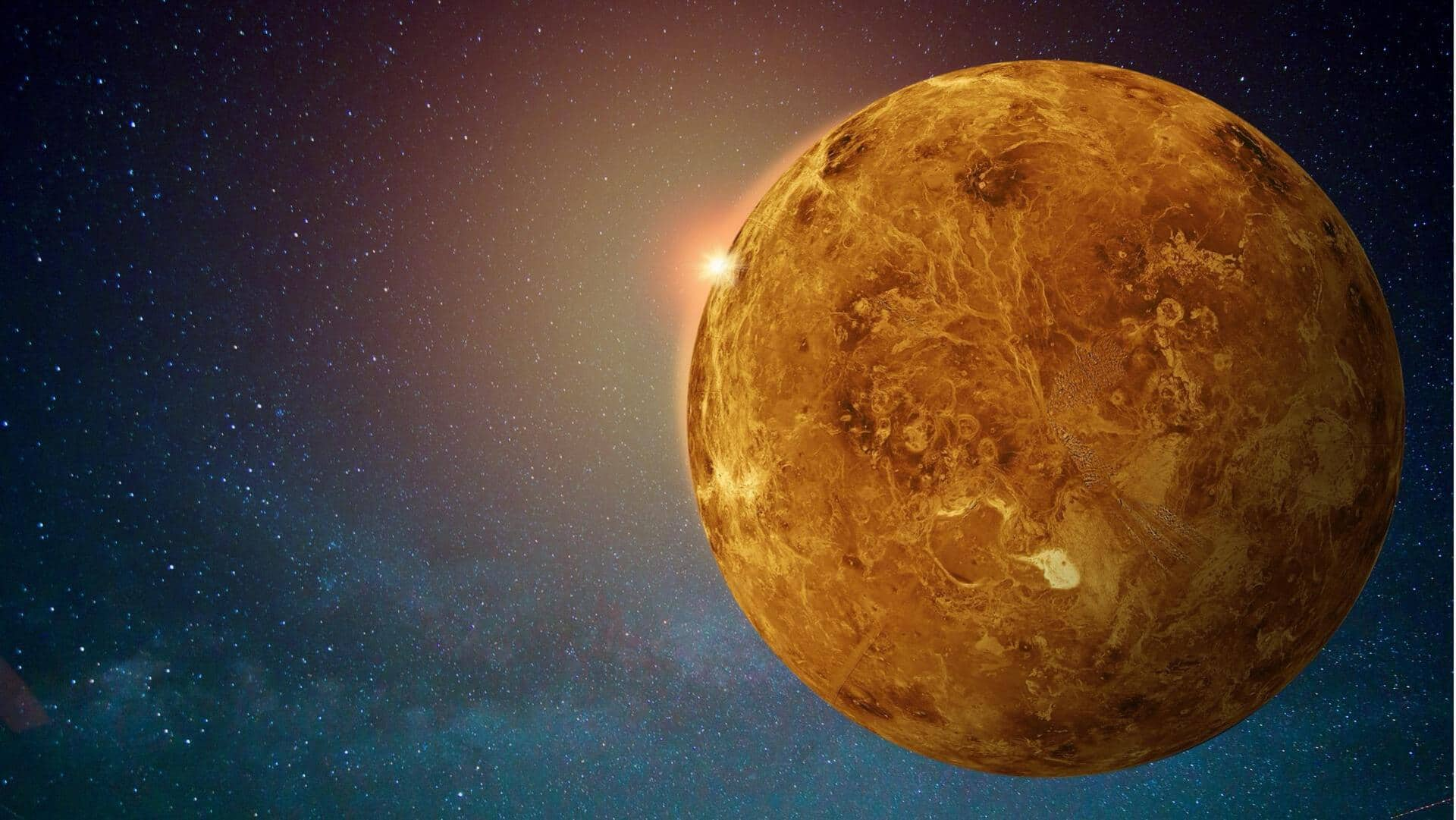
Venus reaches 'maximum elongation' point today: How to watch
What's the story
Today, skywatchers are being treated to a celestial event as Venus has reached its greatest western elongation. This means the 'morning star' is at its maximum angular distance from the Sun in Earth's sky. Venus is shining as a bright, magnitude -4.3 body that rose over the eastern horizon. So, how to watch it? Let's see.
Orbital peak
Orbital milestone and visibility
Venus reached its greatest western elongation at 0400 GMT (9:30am IST), as per EarthSky.org. At this point, it was separated from the Sun by an angular distance of 46 degrees along the ecliptic plane. This is the imaginary line in the sky where we see most planets travel across different constellations.
Tips
Tips for viewing
Venus is easily visible to the naked eye, but stargazers require a telescope with an aperture of at least 60mm to see its disk, which looks half lit at this point in its orbit. This is because the planet has been a regular fixture in the morning sky since its inferior conjunction on March 22.
Characteristics
Venus's unique orbit and future visibility
Venus's proximity to the Sun keeps it relatively close to the star in the sky, unlike Mars, Jupiter, Saturn, Uranus, and Neptune, which have more distant orbits that allow for nighttime visibility. To note, despite today being the day of greatest separation between Sun and Venus in its morning apparition phase, it won't be in its highest position above the eastern horizon in the coming months.